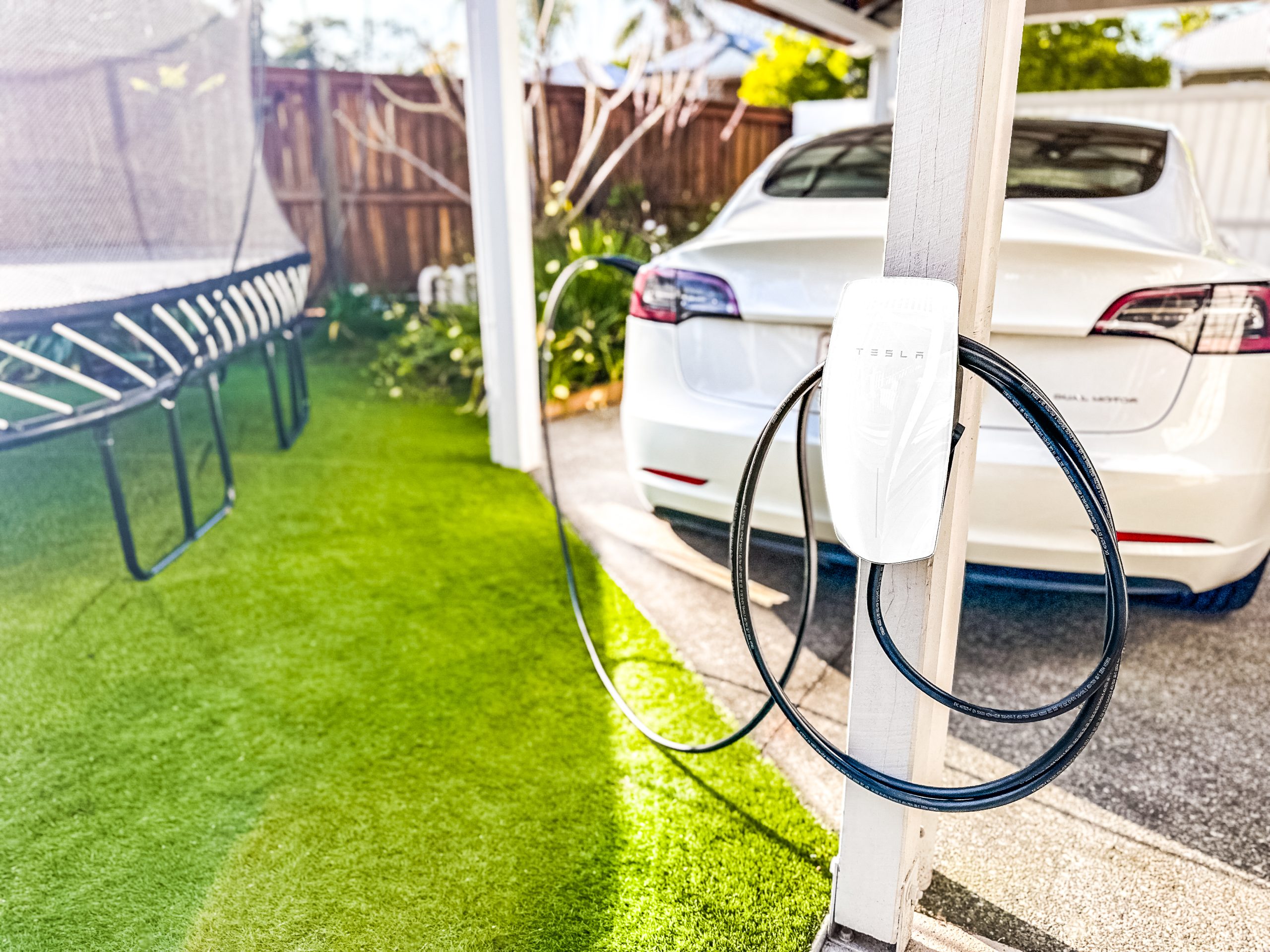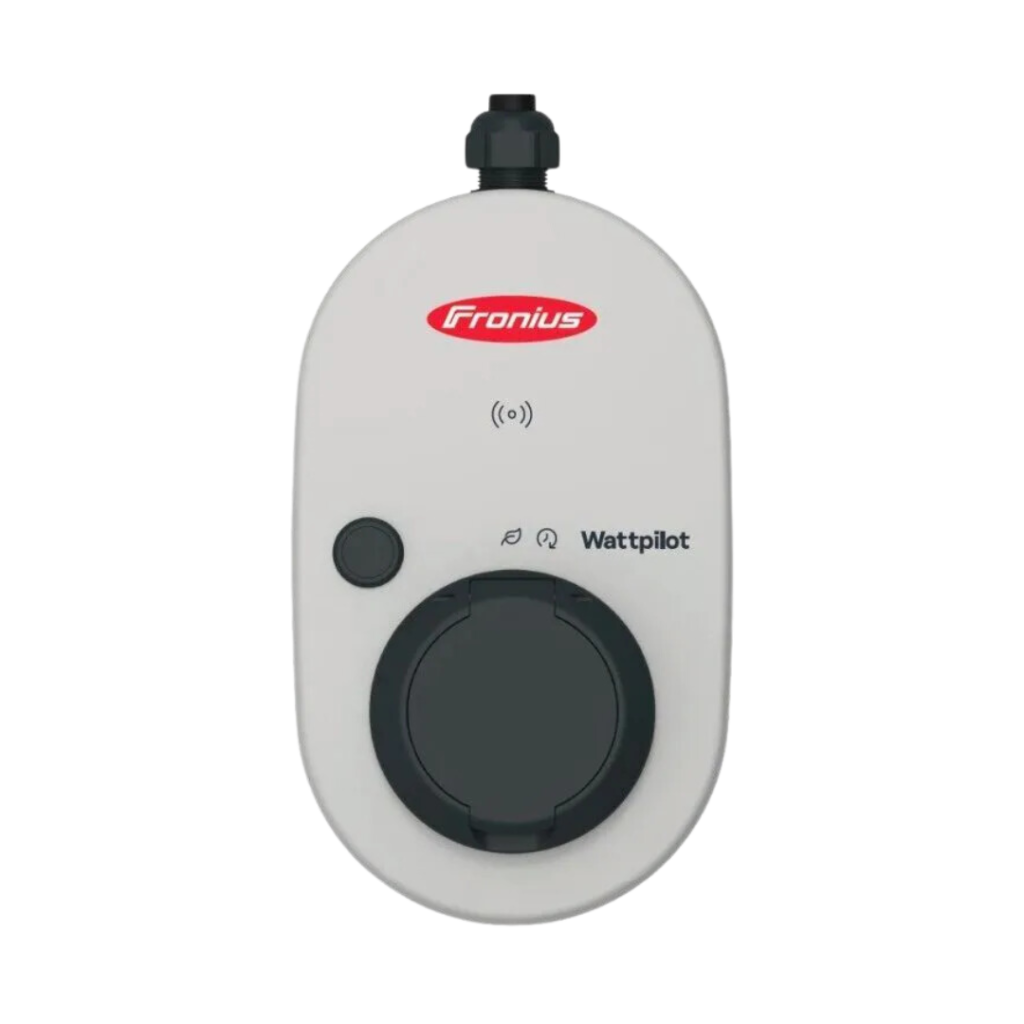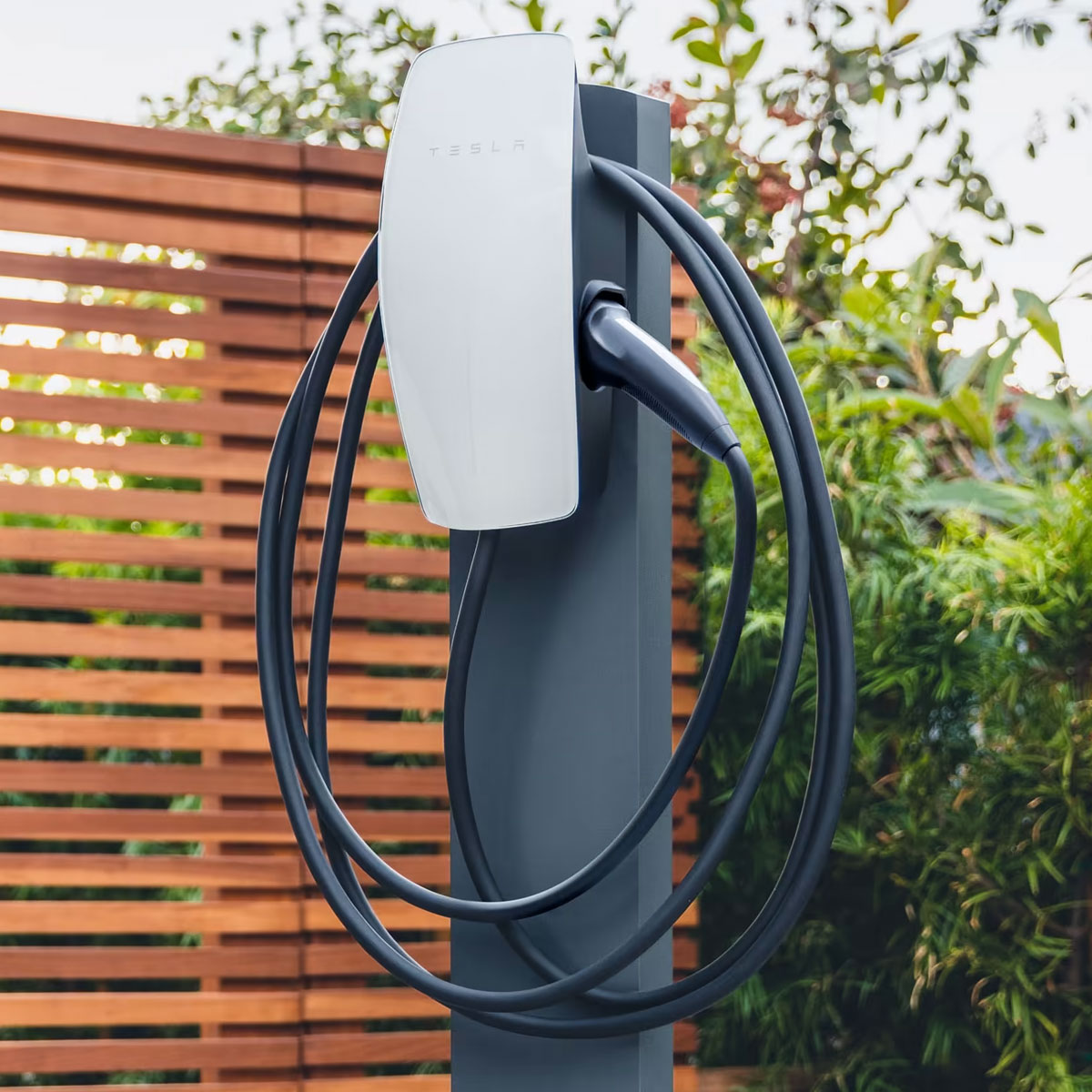As seen on Open Homes Australia Season 4 and Australia’s Best House Season 3
November 2025 Update:
Our service team is currently at capacity so we are not quoting and installing EV chargers for new and existing customers at the moment.
Please contact Stay Bright Electrical if you live in Brisbane North or DRC Electrical if you live in Brisbane South for a quote and installation.

Tesla’s home charger, known as the ‘Tesla Wall Connector’, is the most elegant of all EV chargers. Surprisingly, it’s also our most affordable charger. It boasts a slimline, sleek design with interchangeable colours and a tethered cable that wraps neatly around the unit.
A Tesla home charger can charge any EV available in Australia. If you drive a Tesla, there are added benefits. The plug top on the Tesla EV charger has a button that opens the charger cover on any Tesla EV. It sounds like a minor feature — until you use a charger that doesn’t have it. The Tesla Wall Connector can technically function as a solar EV Charger.
If you own a Tesla EV, you can connect your car and solar inverter to an app called ‘Charge HQ’. While not perfect, the accuracy of its solar EV charging is decent. For higher accuracy, consider the Zappi EV charger.
Sometimes we get it wrong. Zappi was one of those times. While Zappi was first to market, packed with features, and is one of Australia’s most popular EV chargers, it didn’t pass our testing. Here’s Mark’s honest review.

The Fronius EV charger, also known as the Fronius Wattpilot, has its unique strengths. It’s the preferred choice for those with a Fronius Solar inverter. When linked to ‘Fronius Solar.Web’, the Fronius Wall Connector functions efficiently as a Solar EV charger, updating data every 30 seconds. Integrated into the Fronius ecosystem, your EV charging data blends seamlessly with your solar import, export, and consumption data on Solar.Web.
The Fronius brand assures longevity. Unlike others, the Fronius Wattpilot is an untethered charger, so you’ll need to provide your type 2 cable. A significant advantage is its portable version, the Fronius Wattpilot Go, which you can take anywhere that has a three-phase outlet. You’ll just need an electrician to install the appropriate outlet at your home.

The Evnex EV does what Telsa and Fronius can’t – independent solar surplus charging. Unlike the Fronius Charger, you don’t need a Fronius inverter, and unlike Telsa, you don’t need a Tesla Powerwall and a Tesla EV in order to charge a car on Sunshine alone. Even better, the Evnex charger comes with a 4g connection (like your phone), so you don’t need to rely on WiFi.
But how does it go when I pressure test it? Does it derate on hot days like the Zappi charger? Check out my video.

Charging an EV with solar is similar to charging a solar battery. First, we need to install a device to measure the excess solar energy being sent back to the grid. The more accurately this is measured, the more precise your solar EV charging will be. Zappi, Fronius, and Tesla each have different methods to measure excess solar.
Zappi makes real-time adjustments, and Fronius Wattpilot connects online, updating every half-minute. Tesla (the car, not the charger) can be connected to the third-party app Charge HQ, providing the most affordable yet less precise method.
Yes. A Tesla EV charger can charge any EV sold in Australia today. However, at present, Tesla chargers can only use excess solar when charging a Tesla car.
Level 2 three-phase chargers can generally charge at a rate of 22kW. Nonetheless, many EVs can only accept charge rates of 11kW (e.g., Tesla Model 3) or even 7kW (e.g., BYD Atto 3). As electric vehicles become more prevalent, they are anticipated to accept faster-charging rates exceeding 11kW.
The Tesla Wall Connector, and Fronius Wattpilot rank among the top chargers in the market. Each has its unique advantages and disadvantages. Watch Mark’s review below for a comparative analysis.
While the Tesla Wall Connector and Fronius Wattpilot are commonly referred to as EV chargers, they don’t actually perform the charging function. The actual charger is integrated into your Electric Vehicle. What we call an EV Charger is technically known as “Electric Vehicle Supply Equipment” or EVSE. However, to keep it simple, we’ll continue to call them EV chargers.